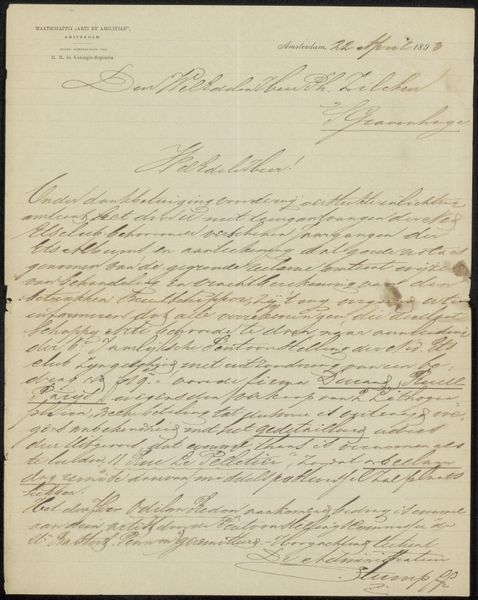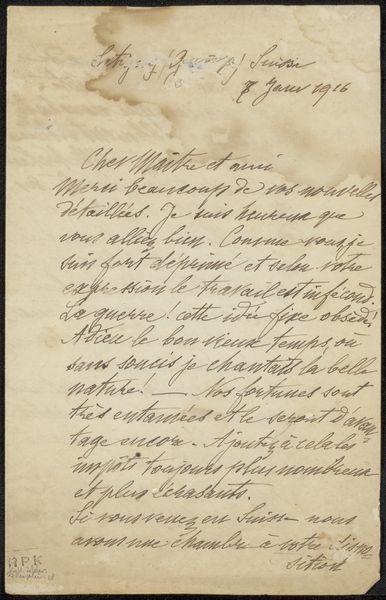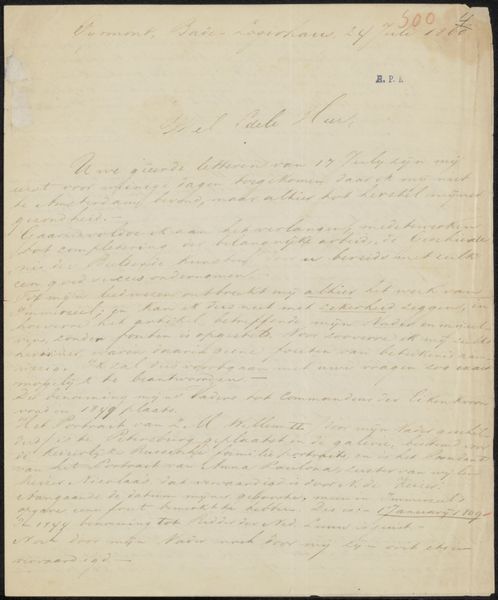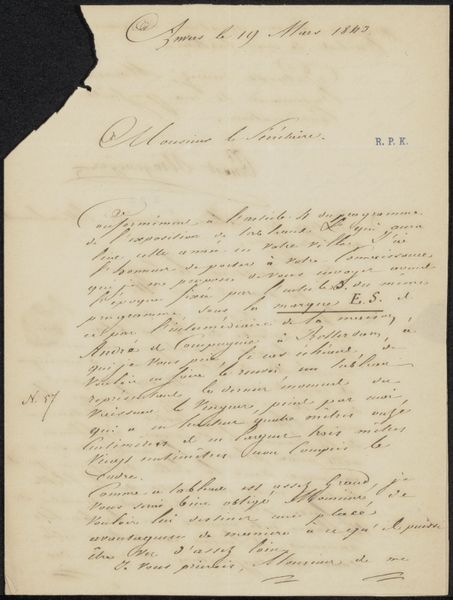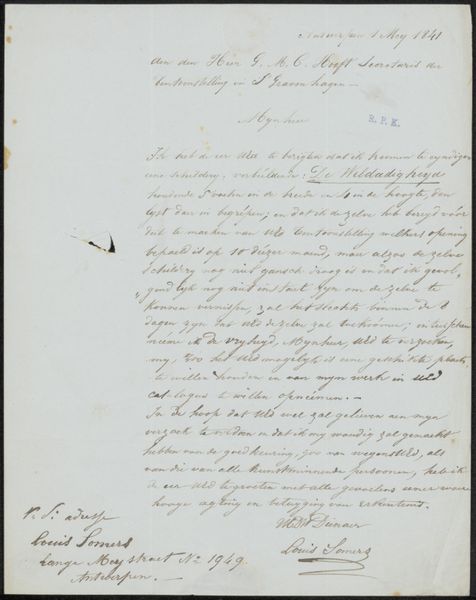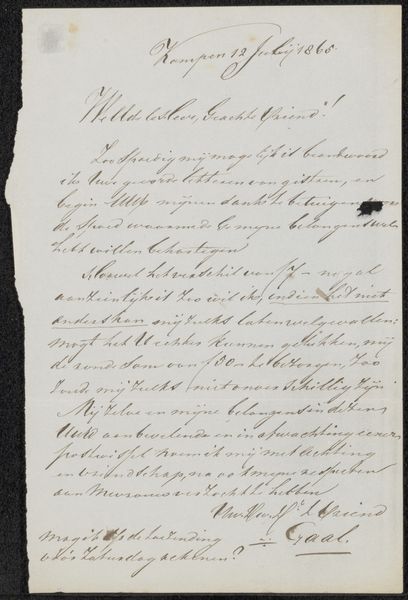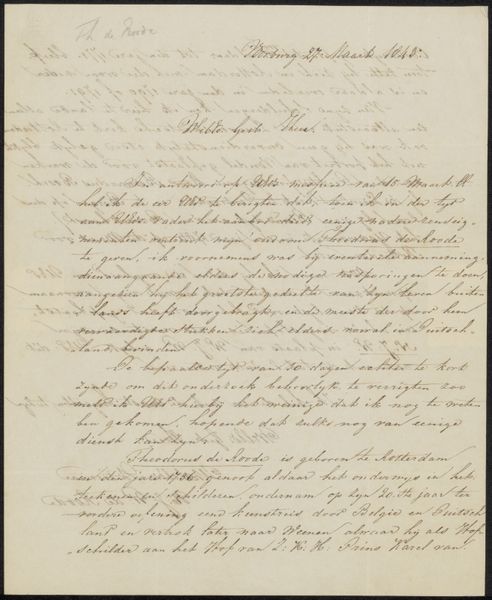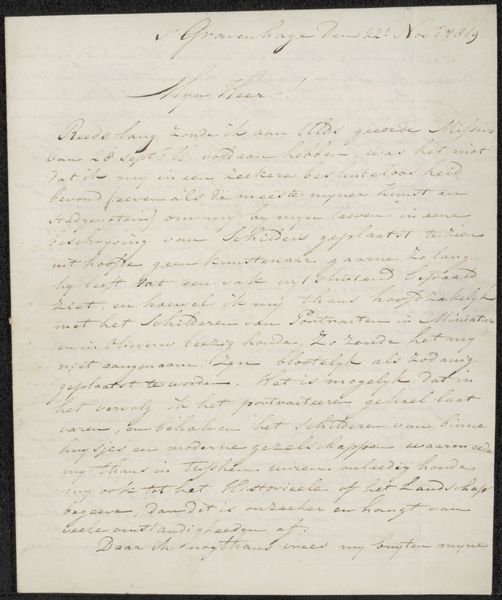
Brief aan de heren van een tentoonstellingscommissie Possibly 1848
0:00
0:00
drawing, paper, ink
#
portrait
#
drawing
#
aged paper
#
toned paper
#
ink paper printed
#
paper
#
personal sketchbook
#
ink
#
ink drawing experimentation
#
pen-ink sketch
#
pen work
#
sketchbook drawing
#
sketchbook art
Copyright: Rijks Museum: Open Domain
Curator: This piece, entitled "Brief aan de heren van een tentoonstellingscommissie"—"Letter to the Gentlemen of an Exhibition Committee"—is believed to date from around 1848. Created by Hubert Willem Plaatzer van den Hull, it's an ink drawing on paper, held here at the Rijksmuseum. Editor: My first thought? Austerity. The toned paper, the elegant script...it speaks of restraint and formal address. The ink, a faded sepia, evokes a bygone era of carefully constructed correspondence. Curator: Indeed. Letters held considerable power then, acting as social currency and tools for navigating artistic circles. This "brief" is interesting precisely because it offers a glimpse into the behind-the-scenes dealings of art exhibitions. The formal tone you pointed out highlights the institutional structure within which artists had to operate. Editor: I'm struck by the symbolic weight of handwriting itself. It represented the individual's presence and intention in a very direct way, before typewriters or digital communication flattened those distinctions. Imagine the impact of Plaatzer van den Hull's choice of phrasing, his careful script intended to persuade this exhibition committee! Curator: It also speaks to the rise of art societies and their role in defining artistic taste and opportunities during the 19th century. Submitting to the judgements of exhibition committees became the standard mode for gaining recognition, and with it a space within the art-historical canon. This document captures that dynamic in microcosm. Editor: So, what can we infer from this document, symbolically? Beyond the literal request it contains, what does it convey about the anxieties or ambitions of the artist? Curator: Well, it suggests the precarity of an artist’s life, even one associated with established institutions. Success depended not solely on artistic merit but on acceptance by influential committees. This highlights the complexities involved when an artist seeks public endorsement in order to become acknowledged as successful and reputable, a goal most artists continue to pursue. Editor: Reflecting on our conversation, this artwork serves as more than just an image of past correspondence; it connects us to the artist's desire for his works to be accepted for exhibition. The formal presentation gives us insights on how one’s intentions may impact one's perception and the desire to become noteworthy within artistic settings. Curator: A tangible manifestation of hope, frustration, and aspiration within the artistic establishment.
Comments
No comments
Be the first to comment and join the conversation on the ultimate creative platform.
